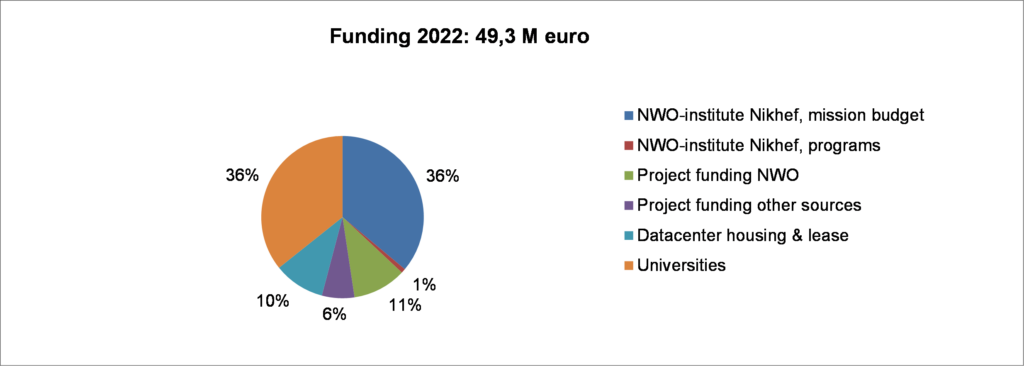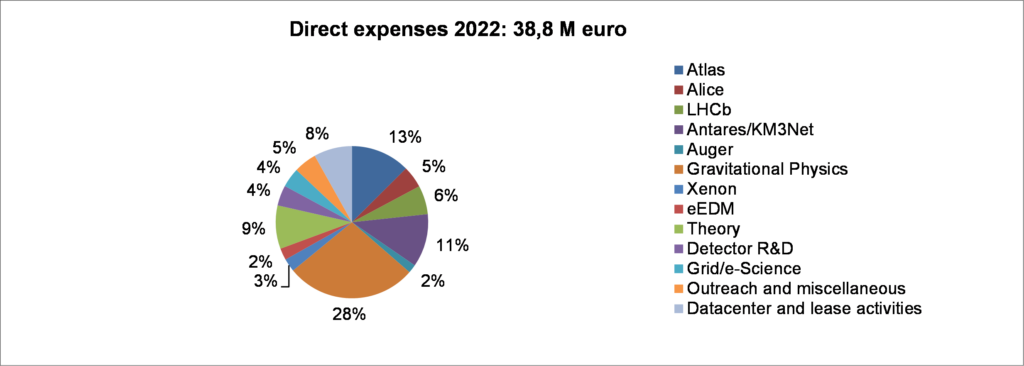Funding & Expenses
As per 2017 – the first year of Nikhef’s most recent strategic plan- the financial facts and figures also include large investments, such as grants from the National Roadmap for Large Research Infrastructures. In the 2013 – 2022 graph the largest part of the increase from 2016 to 2017 is attributable to this change in reporting.
The 2022 funding level of the Nikhef partnership is comparable with the previous year: 49,3 M€ (cf. 49,8 M€ in 2021). The universities now make out about 36% of the total. This large share is explained by new partners (Groningen in 2016, Maastricht in 2019), who have joined the partnership, an increased number of staff at each partner (funded by scheme as ‘sectorplannen’) an increasing number of projects (in particular some large investments, such as for ETpathfinder and Virgo), that are managed administratively by the university partners.

The enabling activities (computing, detector R&D and particularly Theory) comprise 17% of expenses, whilst industrial, outreach and datacenter activities make out the remainder (13%) of the direct costs.


